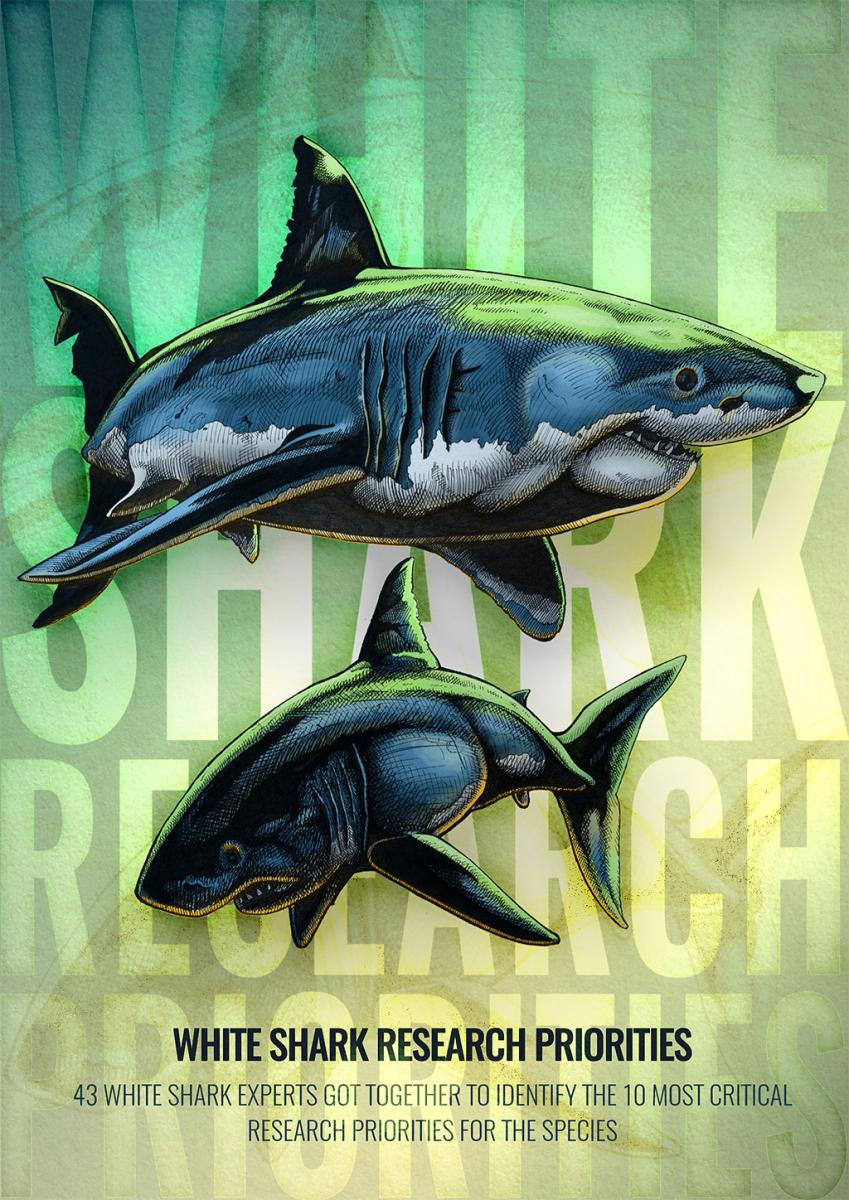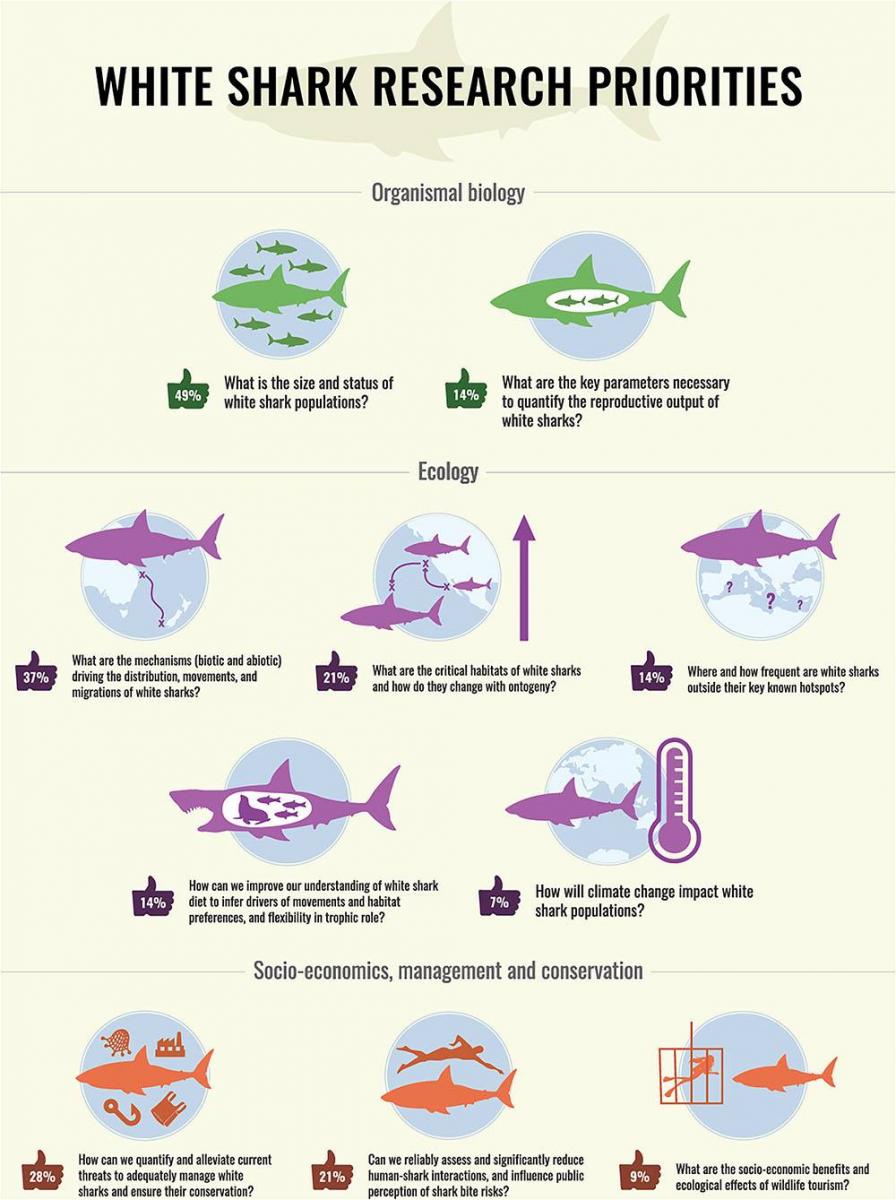White Shark Research Priorities

White shark experts from across the globe came together to map out the priorities for future research on the species. Our shark biologist, Alison Towner, contributed to this critical paper, as did her PhD supervisor Dr Malcom Smale, and past students affiliated with the Dyer Island Conservation Trust.
“White sharks, Carcharodon carcharias, are often described as elusive, with little information available due to the logistical difficulties of studying large marine predators that make long-distance migrations across ocean basins. Increased understanding of aggregation patterns, combined with recent advances in technology have, however, facilitated a new breadth of studies revealing fresh insights into the biology and ecology of white sharks. Although we may no longer be able to refer to the white shark as a little-known, elusive species, there remain numerous key questions that warrant investigation and research focus. The themes developed here provide a global road map for white shark research that will enable further comparisons among aggregation sites and a broader understanding of white shark ecology.”


Infographics and visuals for this study were designed by loyal DICT supporter and past research assistant, David Edwards.
Read White Shark Research Priorities
_1420x587_crop_80.jpg)






